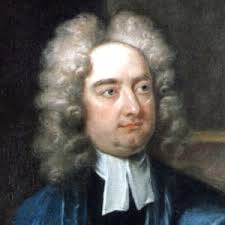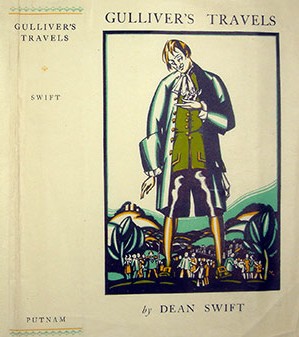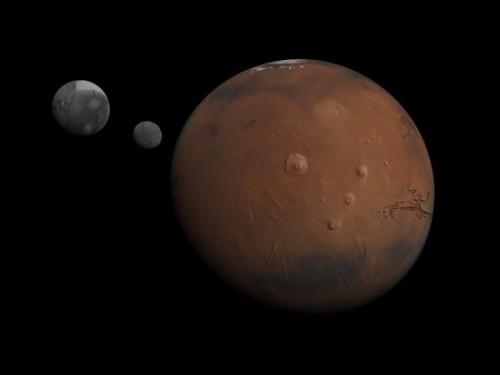“Vision is the art of seeing what is invisible to others”. “When a true genius appears, you can know him by this sign: that all the dunces are in a confederacy against him”. [Jonathan Swift]
Born on November 30, 1667, Irish author, clergyman and satirist Jonathan Swift grew up fatherless. Under the care of his uncle, he received a bachelor’s degree from Trinity College and then worked as a statesman’s assistant. Eventually, he became dean of St. Patrick’s Cathedral in Dublin. Most of his writings were published under pseudonyms. He is best remembered for Gulliver’s Travels. He died on October 19, 1745. Although not a scientist, he had friends and acquaintances that were, and was familiar with the work of astronomers such as Johannes Kepler.

Gulliver’s Travels was published on October 28th 1726. It is regarded as his masterpiece. As with his other writings, he had the Travels published under a pseudonym, the fictional Lemuel Gulliver, a ship’s surgeon and later a sea captain. Though it has often been mistakenly thought of and published in abridged form as a children’s book, it is a great and sophisticated satire of human nature based on Swift’s experience of his times. Gulliver’s Travels is an anatomy of human nature, a sardonic looking-glass, often criticised for its apparent misanthropy (a generalized hatred for mankind). It asks its readers to refute it, to deny that it has adequately characterised human nature and society. Each of the four books—recounting four voyages to mostly fictional exotic lands—has a different theme, but all are attempts to deflate human pride. Critics hail the work as a satiric reflection on the shortcomings of the then current Enlightenment thought.
In the third chapter of ‘Voyage to Laputa’ we read: ‘They (the Laputans) have likewise discovered two lesser stars, or satellites, which revolve about Mars, whereof the innermost is distant from the centre of the primary planet exactly three of his diameters, and the outermost five; the former revolves in the space of ten hours, and the latter in twenty-one and a half; so that the squares of their periodical times are very near in the same proportion with the cubes of their distance from the centre of Mars, which evidently shows them to be governed by the same law of gravitation that influences the other heavenly bodies’.
Swift took great pains to remind us that of the Laputans, he says, ‘Imagination, fancy and invention, they are wholly strangers to, nor have any words in their language by which those ideas can be expressed’.
A century and a half later, on August 11th 1877, Asaph Hall, an astronomer working at the US Naval Observatory in Washington, DC., using a 26-inch refracting telescope, discovered Mar’s outer satellite. On August 17th, the inner moon was discovered, and in honour of the steeds of Ares (Mars) in Homer’s Iliad, named them Phobos and Deimos.
As if this were not enough, it was also discovered that the moons orbited very close to the planet, and that Phobos did exhibit a startlingly rapid periodicity, again as expounded by Swift’s fictitious Laputan astronomers. Martin Gardiner ( Fads and Fallacies in the Name of Science, p.31) writing in 1957 stated: “Phobos is the only known body…that revolves around a central body faster than the central body rotates , yet this fact is included in Swift’s brief description!”
A number of commentators have expressed wonderment at Swift’s seeming prescience, but Immanuel Velikovsky in Worlds in Collision (p 279) offers my favourite explanation: “With the optical instruments of the day (the moons) could not have been seen, and neither Newton or Halley, contemporaries of Swift, nor William Herschel in the eighteenth, or Leverrier in the nineteenth centuries, suspected their existence. It was bold of Swift to assume their very short periods of revolution, (since) measured only in hours; it was a very rare coincidence, indeed, if Swift invented these satellites, guessing correctly not only their existence, their number (two), and especially their short revolutions (one might speculate that he might consider Mars not unlike Earth, the moon of course revolving around the planet in 28 days). There is a chance Swift invented the two satellites of Mars and thus by a rare accident came close to the truth. But it may have been that Swift had read of them in some text not known to us or to his contemporaries. The fact is that Homer knew about the ‘two steeds of Mars’…and Virgil also wrote about them. Whether or not Swift borrowed his knowledge from some ancient work, the ancient poets knew of the existence of the satellites of Mars.”
K.D. Moss, Jonathan Swift and the moons of Mars, Kronos, vol VIII, No.4, p17.

